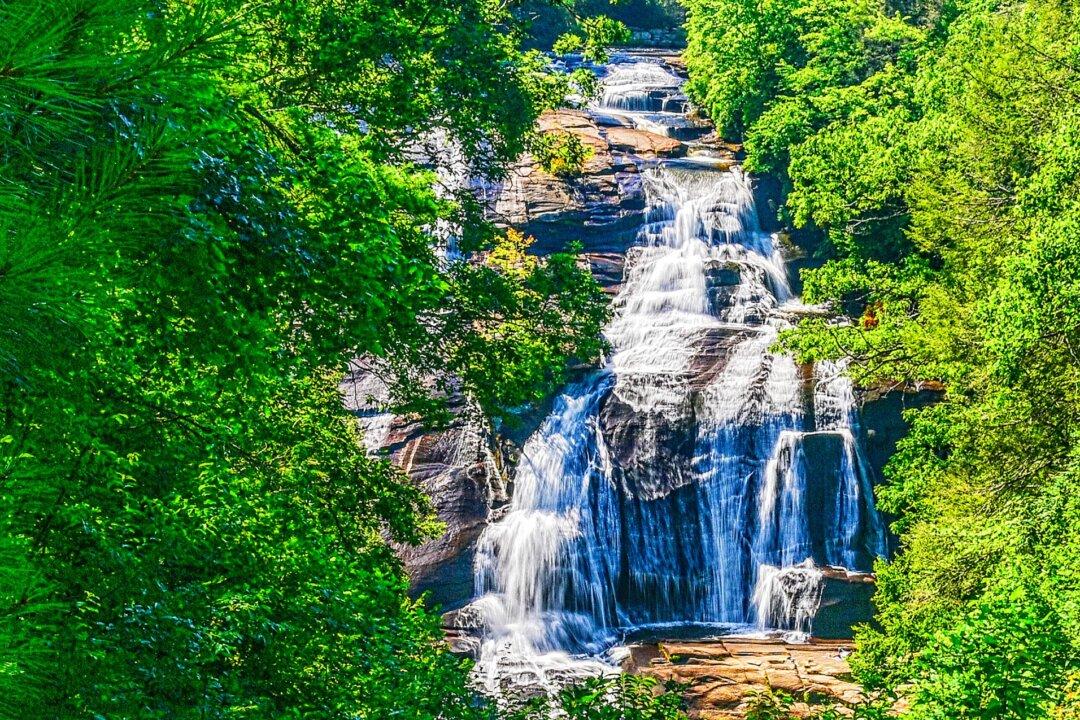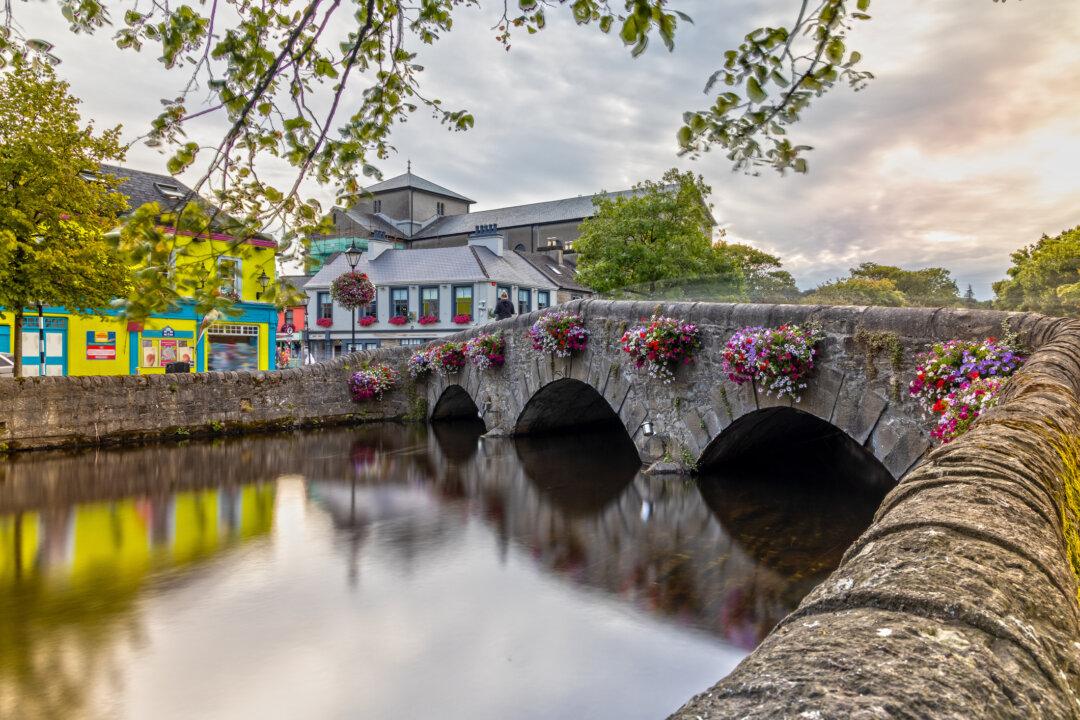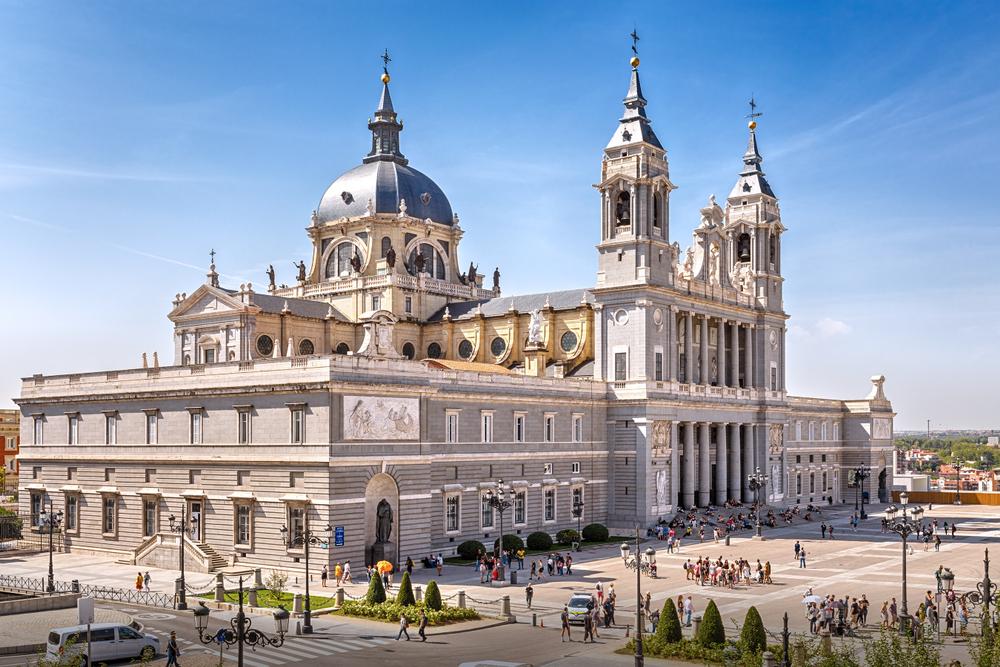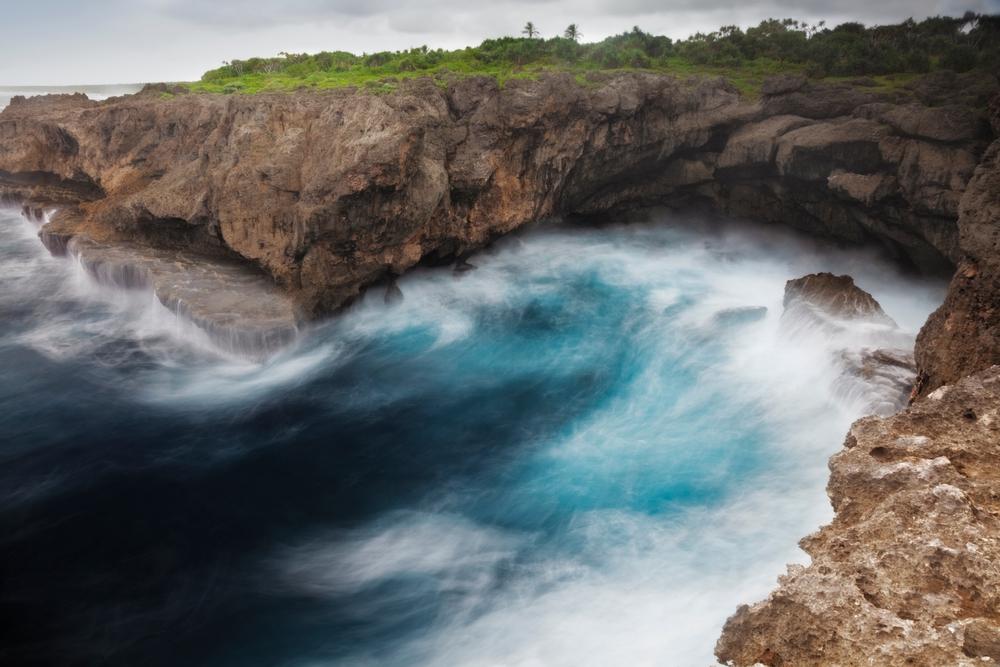Probably no other county in the United States has as many waterfalls as North Carolina’s Transylvania County in the southwestern part of the state, about a 40-minute drive south of Asheville. It’s also home to the highest cascade east of the Rocky Mountains.
The heavily wooded quarter-million-acre picturesque countryside—Transylvania means “across the forest land”—encircles the pleasant town of Brevard (pop. 7,500), which Budget Travel calls “one of America’s coolest small towns.” The Brevard/Transylvania area is widely known by the nickname it long ago got tagged with: “The Land of Waterfalls.”






